MARIANI’SVirtual Gourmet
February 26,
2012
NEWSLETTER
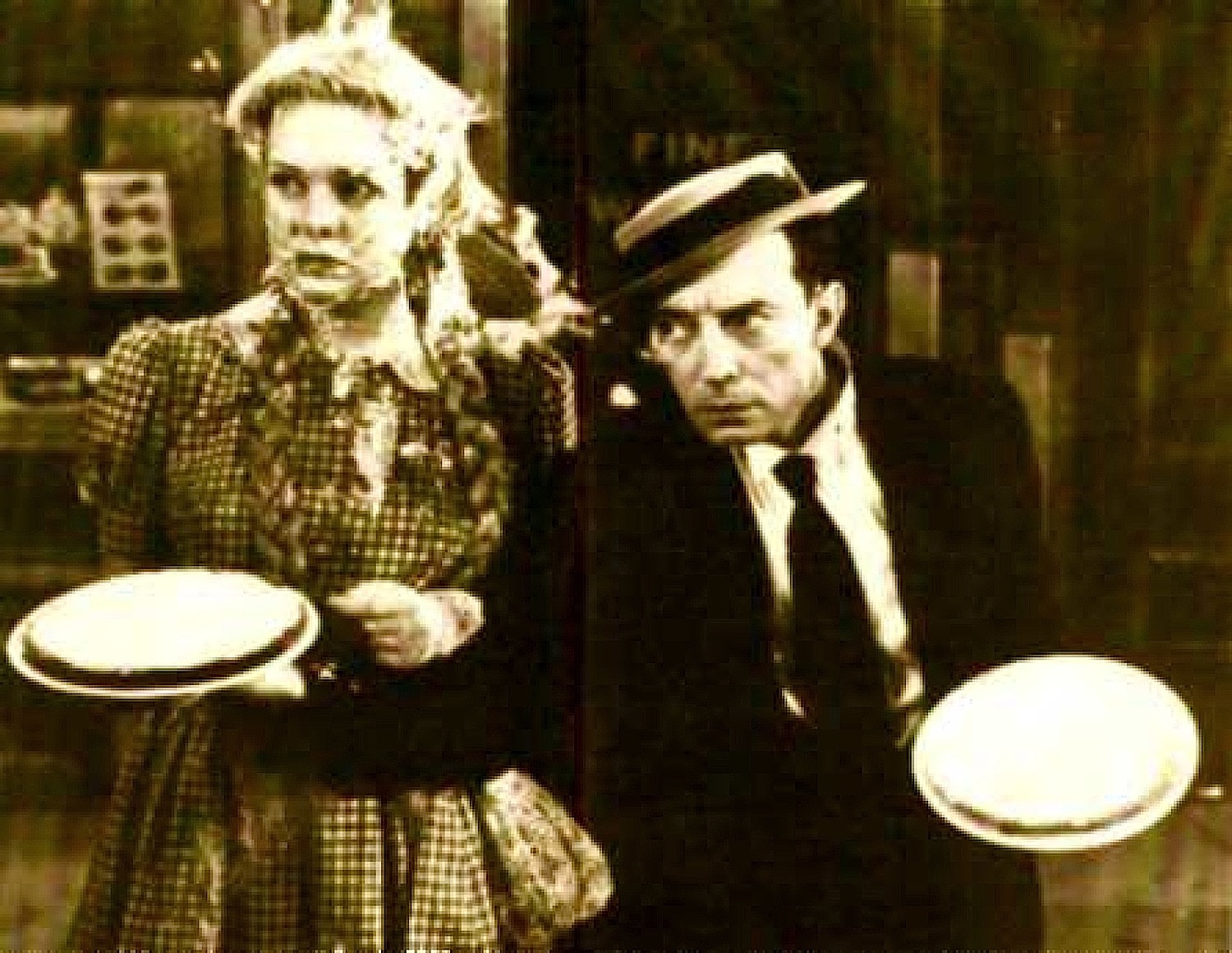
❖❖❖
1. On Thurs. March 8, John Mariani will moderate a panel at The French Institute Alliance Française (FIAF) with César Award winner,
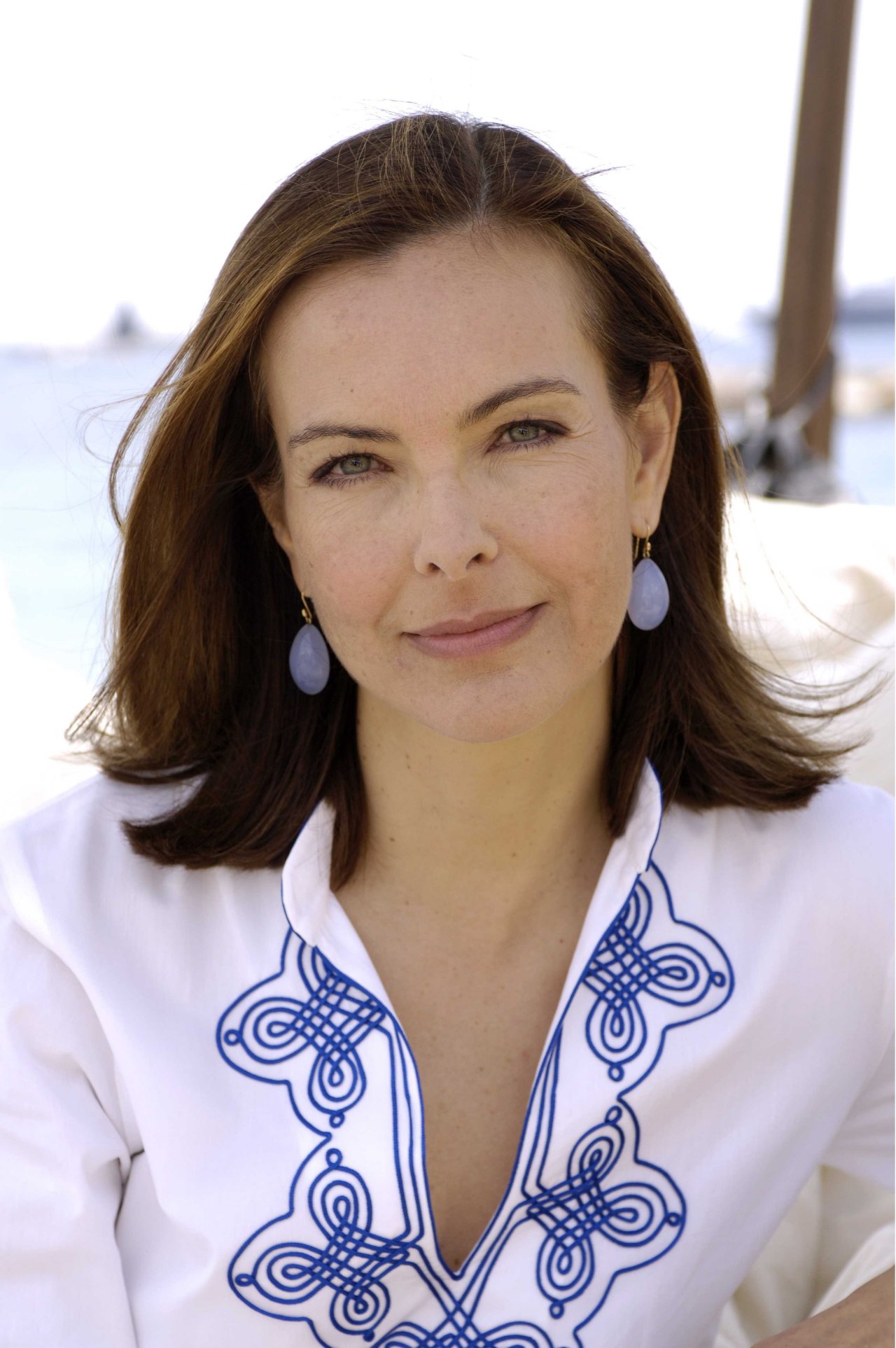 former Chanel
model, and expert wine producer Carole Bouquet
for a special talk on the
occasion of International Women’s Day at 7 PM at
FIAF’s Le
Skyroom. The iconic actress and personality,
recently decorated Commander of
the Order of Arts and Letters, will speak with noted
food writer and historian
John Mariani about her prolific career as an
actress, her passion for
gastronomy and art, and her delicate wine, Sangue
d’Oro, produced on the island
of Pantelleria, south of Sicily. Le Skyroom, 22 E
60th Street (between Park and
Madison Avenue); FIAF Members $20, Non-Members $25;
| 800 982 2787.
former Chanel
model, and expert wine producer Carole Bouquet
for a special talk on the
occasion of International Women’s Day at 7 PM at
FIAF’s Le
Skyroom. The iconic actress and personality,
recently decorated Commander of
the Order of Arts and Letters, will speak with noted
food writer and historian
John Mariani about her prolific career as an
actress, her passion for
gastronomy and art, and her delicate wine, Sangue
d’Oro, produced on the island
of Pantelleria, south of Sicily. Le Skyroom, 22 E
60th Street (between Park and
Madison Avenue); FIAF Members $20, Non-Members $25;
| 800 982 2787. 2. On Sunday, March 11, John Mariani will give a lecture and book signing of his book How Italian Food Conquered the World at Tomasso Trattoria Enoteca in Southborough, Massachusetts from 5 PM-8 PM; Call 508-481-8484.
❖❖❖
THIS WEEK
by Carey Sweet
NEW YORK CORNER
STORICO
by
John Mariani
❖❖❖
by Carey Sweet
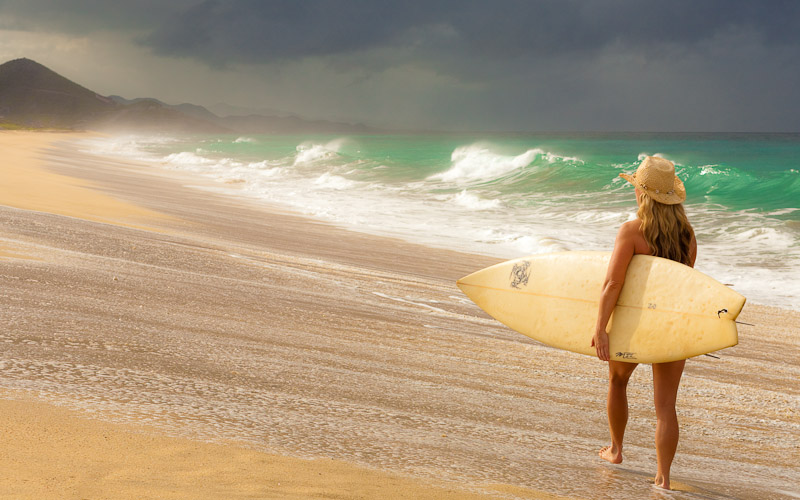
“This really
is a highway,” my driver said, as we bumped the
shiny black town car down the dirt road winding
between cactus-studded mountains. We had been
navigating our rough course for more than an hour
since leaving Cabo, on our way toward the tiny
town of Todos Santos, situated on the Pacific
coast southwest of La Paz.
Normally, the surface is a black
ribbon of asphalt, he promised, but the passage was
being rebuilt, which 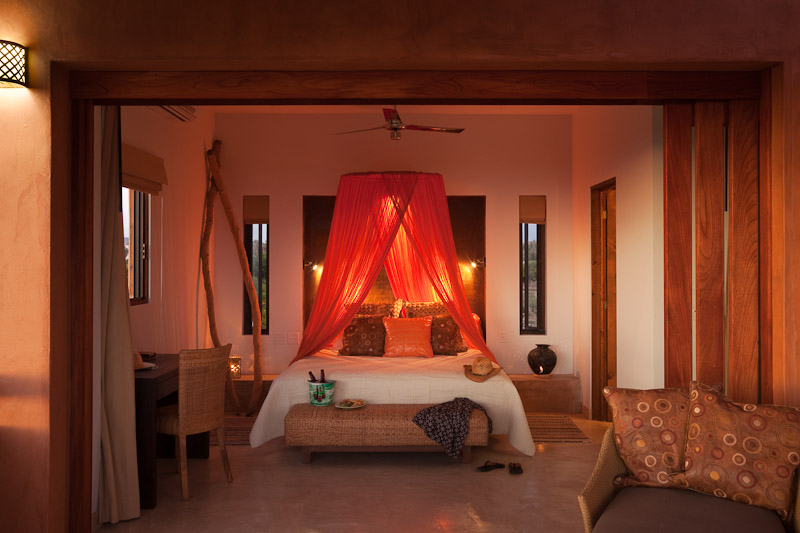 apparently
necessitated its complete destruction. “The resort is
right around the bend,” he said, as we thumped down an
even more mottled road past fields strewn with piled
tree debris in various stages of controlled fire,
strawberry and basil plots, and a donkey grazing on
weeds. We had seen a hint of civilization a few
minutes earlier: the El Pescadero Pemex gas station,
and an espresso café tucked into a shack.
apparently
necessitated its complete destruction. “The resort is
right around the bend,” he said, as we thumped down an
even more mottled road past fields strewn with piled
tree debris in various stages of controlled fire,
strawberry and basil plots, and a donkey grazing on
weeds. We had seen a hint of civilization a few
minutes earlier: the El Pescadero Pemex gas station,
and an espresso café tucked into a shack.
And then we came around that bend,
and there sprawled Rancho
Pescadero, an extravagant hacienda framed by
palapa-topped buildings, palm trees and lush green
shrubbery accented by brilliant fuchsia bougainvillea,
and a 2,000 square foot yoga pavilion all nestled on
15 acres fronting the ocean.
To say that this resort is an
unexpected jewel in an unlikely spot is a
cliché, but there you have it. Since opening in
November of 2009 by San Francisco entrepreneur Lisa
Harper, buzz has been, well, buzzing, about this
destination that combines the intimacy of a
bed-and-breakfast with the remoteness of a secluded
hideaway, with the luxury of a four-star hotel.
A valet led me to my
accommodations, past an intimate al fresco restaurant
accented with elaborate iron chandeliers on its
overhangs, a sleek outdoor bar, and a spectacular
swimming pool that spanned over several levels,
including a raised area set with chaise beds right in
the water. Immediately, I felt my sloth gene kick into
overdrive.There are only 27 rooms, actually all-suite
casitas wrapped in mango-colored pulido, a local adobe
of clay soil with cement. My abode spanned two
stories, starting with an enormous bedroom and lounge
opening to walls that slid completely into
compartments, so that the space flowed across polished
concrete floors laid with hand-woven rugs to a huge, palapa-trimmed
balcony.
To the side was a luxury bath with a soaking tub plus
a farmhouse sink that could have doubled as a tub,
too. A curved metal staircase snaked up from the
balcony next to a private bar and plush outdoor day
bed, and upstairs, I discovered a rooftop retreat
complete with yet another bed shrouded in romantic
netting.
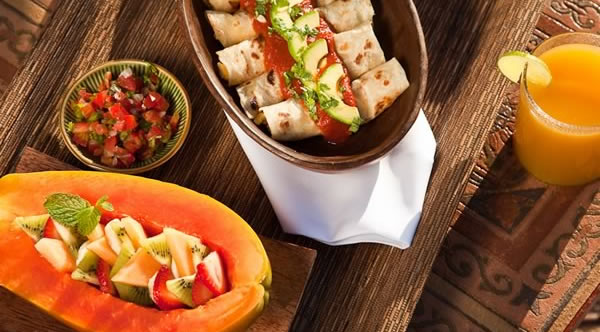 There are no
clocks anywhere at Rancho Pescadero. For the first few
hours, I checked my laptop for time (the wi-fi was
great), and then suddenly realized how ridiculous that
was. The 20-some-seat restaurant is open all day and
much of the night. A margarita can be had at nearly
all hours. The tides and sun would chart my schedule
for the next week, except for appointments I’d made
for a surfing lesson, and with the masseuse who works
with local herb lotions in a gracious, chic little
cabana near the ocean.
There are no
clocks anywhere at Rancho Pescadero. For the first few
hours, I checked my laptop for time (the wi-fi was
great), and then suddenly realized how ridiculous that
was. The 20-some-seat restaurant is open all day and
much of the night. A margarita can be had at nearly
all hours. The tides and sun would chart my schedule
for the next week, except for appointments I’d made
for a surfing lesson, and with the masseuse who works
with local herb lotions in a gracious, chic little
cabana near the ocean.
When Harper
first discovered this property more than a decade ago,
her vision was to build a private home as an escape
from the demands of her former career as a clothing
design executive, and then CEO of Gymboree. That
residence still exists, as a second section of rooms
with a private swimming pool. But she apparently
sought to “share the love,” and I’m glad she did,
since it meant that I started each day with a splendid
breakfast, easily the best machaca eggs I’ve ever enjoyed.
Rancho’s executive chef is named
Rodrigo Bueno, and before landing in the Baja, he was
executive sous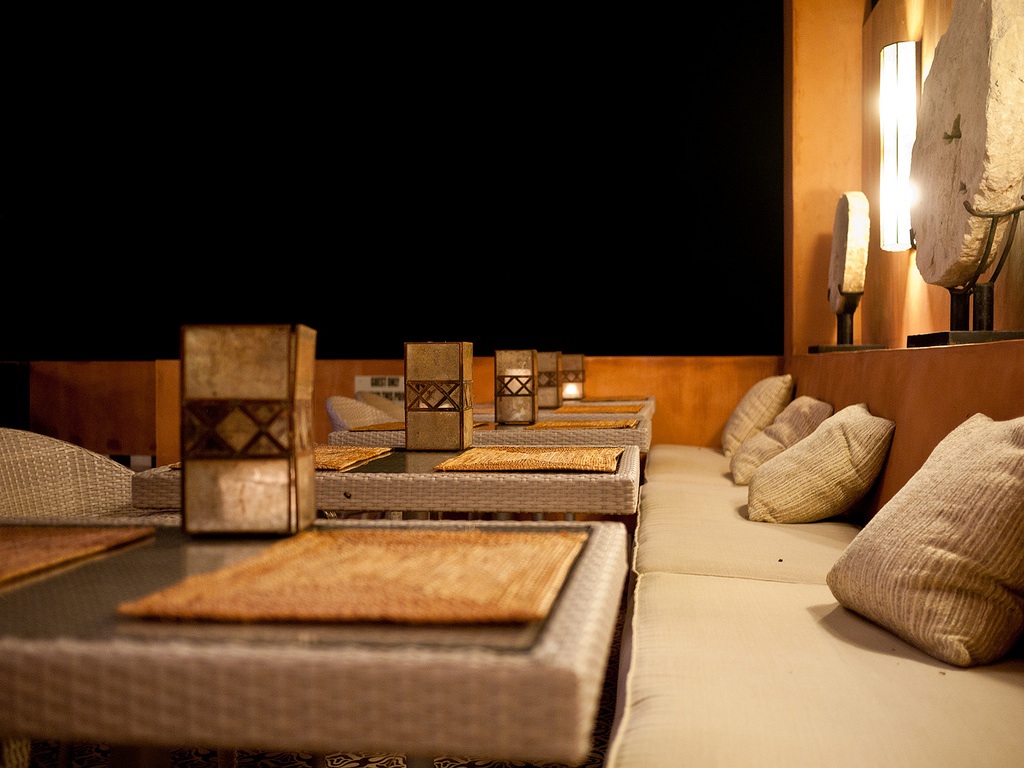 chef at chef
Jean-Georges Vongerichten’s Market Restaurant. For his
machaca, he
braises the dried beef to juiciness and melds it with
fluffy scrambled eggs, ripe avocado and crema, tucked
into warm flour tortillas. Alongside are creamy refried
beans stabbed with crunchy tortilla chips for
scooping, and a dish of fiery salsa, all served on the
patio (right).
chef at chef
Jean-Georges Vongerichten’s Market Restaurant. For his
machaca, he
braises the dried beef to juiciness and melds it with
fluffy scrambled eggs, ripe avocado and crema, tucked
into warm flour tortillas. Alongside are creamy refried
beans stabbed with crunchy tortilla chips for
scooping, and a dish of fiery salsa, all served on the
patio (right).
Chilaquiles (below)
are fantastic, too, reminding me why this simple dish
can be so sumptuous when made by a good kitchen. Chef
Bueno piles the soft, spicy-sauced tortilla chips with
tender strips of roast chicken, adds a silky perfect
poached egg alongside, and smoothies a pond of those
heavenly refried beans. No matter that each morning
began with complimentary fresh fruit, pastries and
coffee delivered to my door, I always found room more
a second meal.
Through breakfast, lunch and
dinner, Bueno draws on locally grown organic fruits,
veggies and still-flapping ocean catches. Grounds have
been prepped for the resort’s own one-and-a-half acre
organic garden next to a new special events kitchen
and casa
off the front driveway; besides the set menu, Bueno
concocts an impressive selection of daily specials –
more remarkable given his audience of diners are often
just the small community of a few dozen guests, and
savvy visitors who have learned that the restaurant is
open to the public. He’s got a knack
for fancy presentations, such as artfully plated catch
of the day napped in tamarind coconut broth, Baja
shrimp ranchero with corn masa polenta and
sautéed Rancho Pescadero vegetables, or Mexican
chocolate panna
cotta finished in salted caramel.
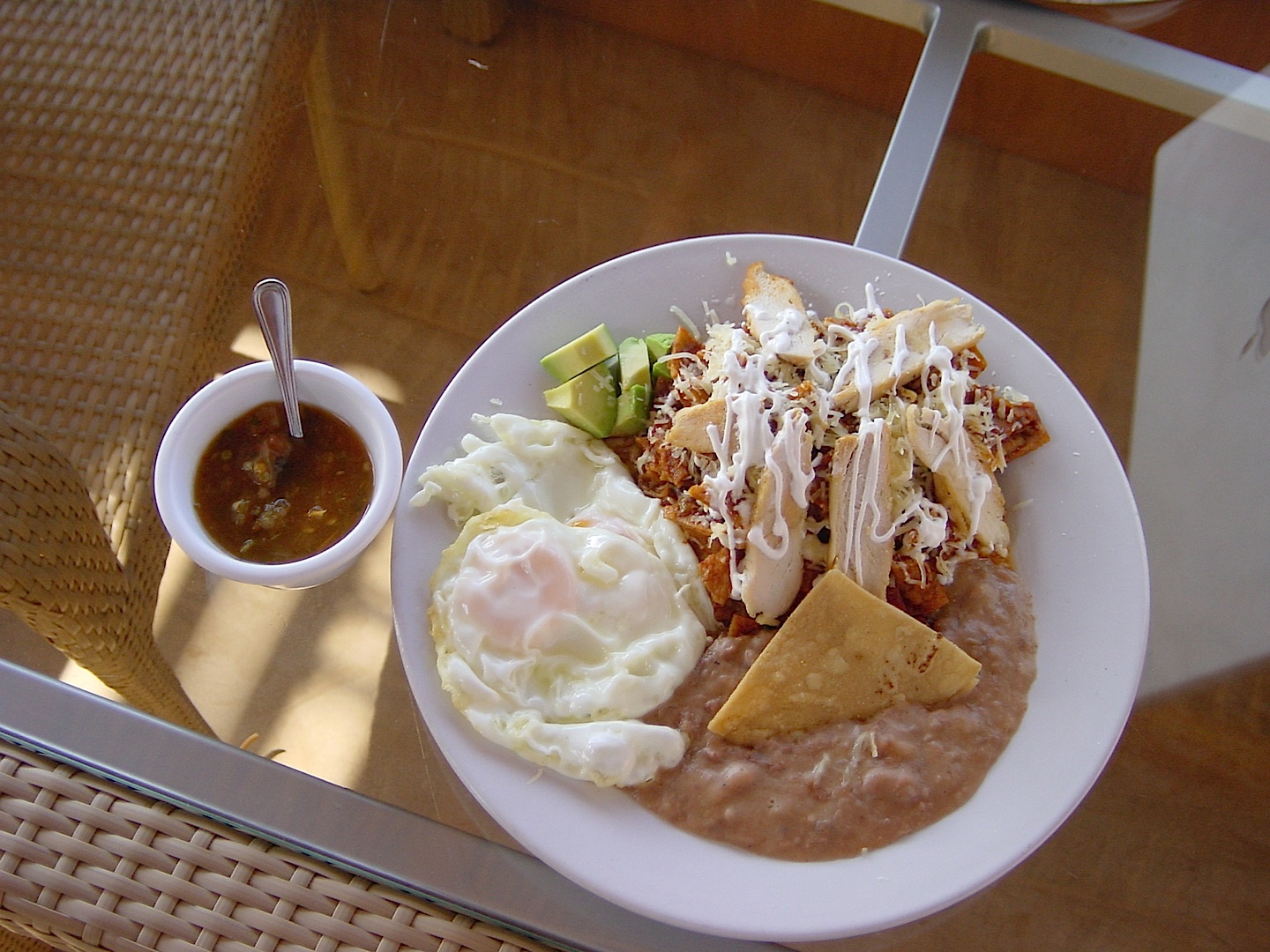 Some notable culinary
mentors have fallen in love with Rancho Pescadero,
too: Jeff and Susan Mall, owners of the acclaimed Zin
Restaurant and Eastside Farm in Healdsburg,
California, consulted
with Harper to plant the first garden and helped
create the opening menus. They now return several
times a year to expand the recipes and oversee the
plantings for tomatoes, peppers, squash, baby carrots
and herbs. Their efforts are surprisingly successful
for the desert, aided by a natural aquifer that
nourishes abundant chiles, mangoes, avocados and
papayas. Given the good ingredients, some of the best
dishes are the simplest, like the pasta pestodero
made with Mall’s pesto of mint, basil, fresh lime
juice, toasted almonds, and roasted jalapeños
tossed with pasta, zucchini and cherry tomatoes under
a snow flurry of crumbled Mexican goat’s cheese.
Some notable culinary
mentors have fallen in love with Rancho Pescadero,
too: Jeff and Susan Mall, owners of the acclaimed Zin
Restaurant and Eastside Farm in Healdsburg,
California, consulted
with Harper to plant the first garden and helped
create the opening menus. They now return several
times a year to expand the recipes and oversee the
plantings for tomatoes, peppers, squash, baby carrots
and herbs. Their efforts are surprisingly successful
for the desert, aided by a natural aquifer that
nourishes abundant chiles, mangoes, avocados and
papayas. Given the good ingredients, some of the best
dishes are the simplest, like the pasta pestodero
made with Mall’s pesto of mint, basil, fresh lime
juice, toasted almonds, and roasted jalapeños
tossed with pasta, zucchini and cherry tomatoes under
a snow flurry of crumbled Mexican goat’s cheese.
While it’s easy never to leave the
resort – indeed, one couple in the casita next to me
had been encamped for a month, and told me quite
proudly that they had only gone off-site twice – it’s
easy to explore, too. Rancho sits six miles south of
Todos Santos (left),
a tiny, sleepy but packed-to-the-brim town glittering
with art, jewelry and clothing shops, a handful of
notable restaurants and other hotels like the Hotel
California, which some like to say inspired the famous
Eagles’ song in 1976, not.
Rancho reserves drivers to ferry
guests back and forth, and it’s worth an afternoon to
poke around the eucalyptus and palm lined dirt roads,
admiring the well-preserved brick buildings of the
“Pueblo Magico,” the square in front of the church,
the Teatro Marquez de Léon old-fashioned
cinema, and ubiquitous Tropic of Cancer curio stands.
My plan had been to take lunch at Café Santa Fe
one afternoon, but owners Ezio and Paula Colombo had
gone on vacation, decided to stay away longer than
anticipated and their eatery was closed. Too bad --the
café, housed in a beautifully restored 1850s
building in the historical district, is celebrated for
its Italian-Baja cuisine. Yet such is the roll-with-it
beauty of this sun-soaked region – and certainly
another tasty meal awaited me at Barajas Taco/Happy
Fish nearby, an open-air casual charmer with carnitas,
seafood and carne
asada stuffed into just-made tortillas.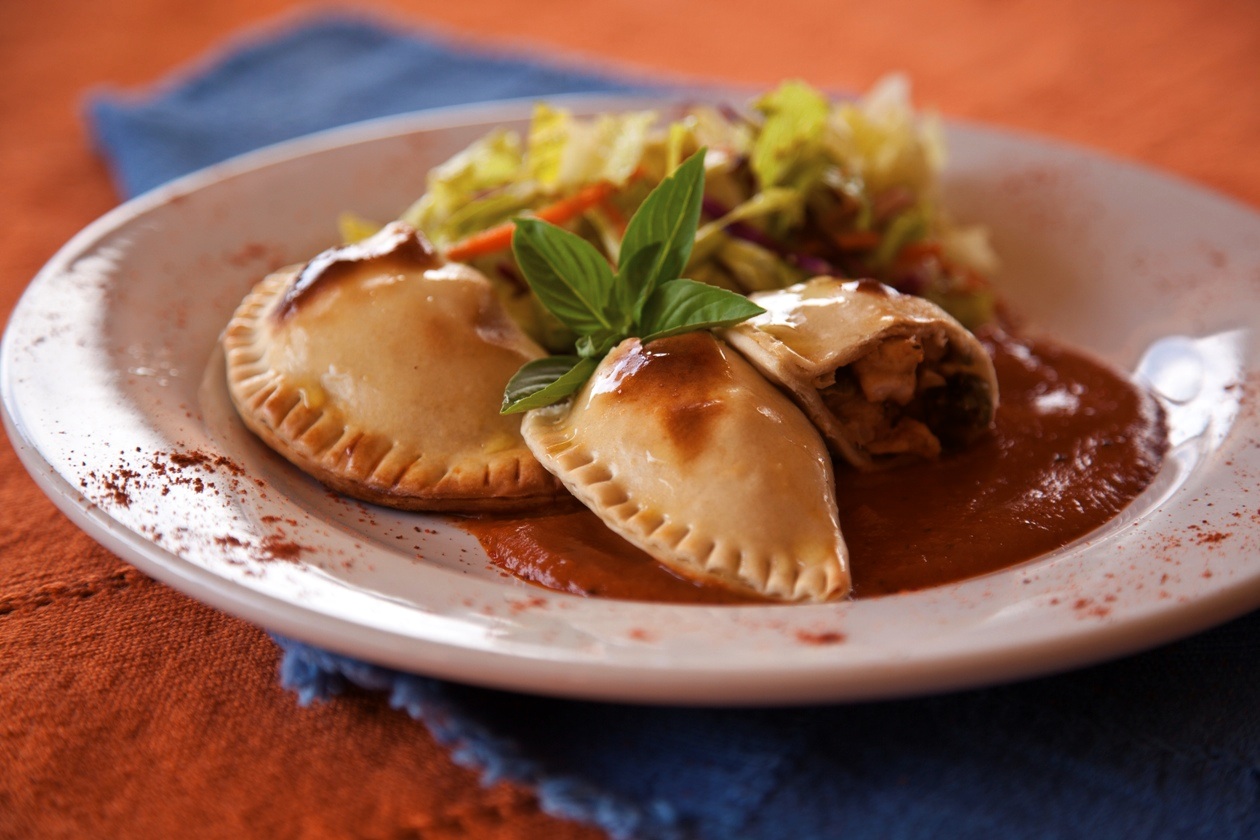
If Italian food didn’t seem like a
predictable beach town feast, then I had a more
difficult time grasping Michael’s at the Gallery,
which opened in late 2008 with an Asian themed menu.
Yet after my first bite, I bought in. At this open
air restaurant attached to an art gallery, we watched
chef-owner Michael Cope cook panko fish with curry
sauce in his exposition kitchen on the edge of our
dining patio, and when we’re done, we wander his art
salon and admire that he his skill with that second,
demanding craft.
With all the
joys of the town, one thing to keep in mind is that
this area isn’t for everyone. Quite literally. As I
wandered about, it struck my how quiet this peaceful
part of the world was. Deserted, no, just blissfully
silent. Then, bingo!, it hit me: many Todos Santos
lodgings, including Rancho Pescadero, are adults-only.
Dogs, welcome. Kids? Nope.
Another day, only one thing,
surfing, could lure me from my cocoon of Pescadero
pleasure. Oh, that margarita awaited me at my poolside
chaise, a siren of fresh fruit and sparkly spice, but
Rancho’s sympathetic bartender packed me one to-go for
my 20-minute drive a few of miles south to Cerritos
Beach. While Rancho’s private beach is beautiful,
stretching wide and pristine and solitary for
two-and-a-half miles, it’s better suited for a nap on
the canopied daybeds arranged on the meticulously
groomed dunes. Waves thrash wickedly here, with
sputtering whitecaps beneath the graceful shadows of
soaring pelicans, and it’s clear that this is no safe
place for surfing or swimming. Instead, Cerritos Beach
is milder, and also set up with sports gear rentals
manned by tanned male
instructors who are clearly comfortable with ladies
like me who have never surfed before. “Lie down, hands
out, pop up and surf,” said my muscled Lothario,
demonstrating on his board. “Easy.”
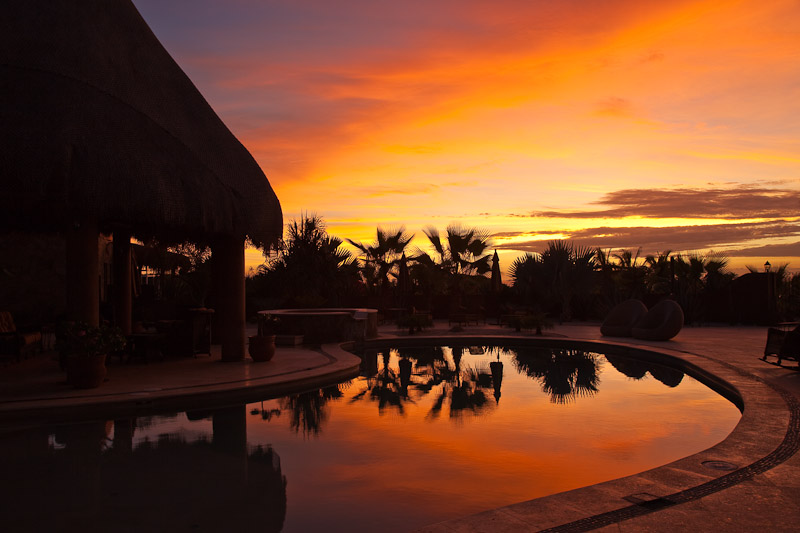 He paddled out
past the swelling waves with me, and offered helpful
advice like, “No, do not fall off. No, it is not good
to let the board hit you on the head. No, you do not
want to be crushed by the wave as it knocks you upside
down and tries to kill you. Just surf.”
He paddled out
past the swelling waves with me, and offered helpful
advice like, “No, do not fall off. No, it is not good
to let the board hit you on the head. No, you do not
want to be crushed by the wave as it knocks you upside
down and tries to kill you. Just surf.”
After a half hour, I limped quite
cheerfully back to the beach, and relaxed under an
umbrella while watching what is apparently another
highly popular Cerrito sport: dachshund digging.
Indeed, another instructor, bored with waiting for me
to “just surf” had cajoled his three tiny pet wiener
dogs to do what they love to do: dig holes. Burrows
completed, the young man gently flipped each dog on
its back into the little pits, and voilá, dog
buried in sand with head, feet and tail sticking out,
joyful canine grins all around.
As I said, time doesn’t have much
meaning in this paradise that is Rancho Pescadero, so
to spend several hours lounging with sandy,
salt-water-wet pups felt like heaven on earth.
Back at my home resort later, I
debated: where would my next drowsy margarita
sip-a-thon take place? I had my pick of places, from
the many cozy cushioned nests all over the property,
on the beach, or even in the embracing king size bed
that lay draped in seductive canopy netting in my
casita.
“It's a rough life,” I mumbled to
myself, collapsing finally on my rooftop bed with the
cooling ocean breezes dancing across my sun-warmed
skin. “Really.”
❖❖❖
NEW
YORK CORNER
by John
Mariani
CAFFÉ
STORICO
New York
Historical Society
170 Central Park West (at 77th Street)
212-873-3400
www.nyhistory.org/dine
Over
the last few years, the chances of getting
a good, even excellent meal, in a
museum have increased measurably, from the restaurant
in the Musée d’Orsay in Paris to The Modern
at New York’s MOMA, from the Court Restaurant at The
British Museum to Ray & Stark Bar at the Los
Angeles Museum of Contemporary Art. Now comes
Caffé Storico, enchantingly set within the
magnificent $65 million restoration of the New York
Historical Society, one of NYC's great institutions,
very near the Museum of Natural History and Hayden
Planetarium. The NYHS has 2,500 American paintings,
40,000 works of art and artifacts, 500 pieces of
antique furniture (including George Washington's
inaugural armchair and Valley Forge camp bed), 3,000
silver items, and 8,000 drawings, including 500 by
John James Audubon. It's one of the city's--and
nation's--great treasures. (Merely to suggest NYC's
riches, across the park from the NYHS is the Museum
of the City of New York.)
Caffé Storico fits
impeccably into the Society's north corner, with
tall windows letting in light that bounces off white
walls and wood, a gleaming historic brass
chandelier, lemon yellow banquettes, a marble
counter, open kitchen and a window into the
sculpture arcade. . Fifteen-foot shelves are
set with antique chinaware from the museum's vast
collection, giving the large space a cheery, homey
look, if your home was arrayed with such a bounty of
beautiful objects. The restaurant and menu is
brought to the city by Philadelphia's restaurant
maestro Stephen Starr (who translated Buddakan and
Morimoto to New York, too).
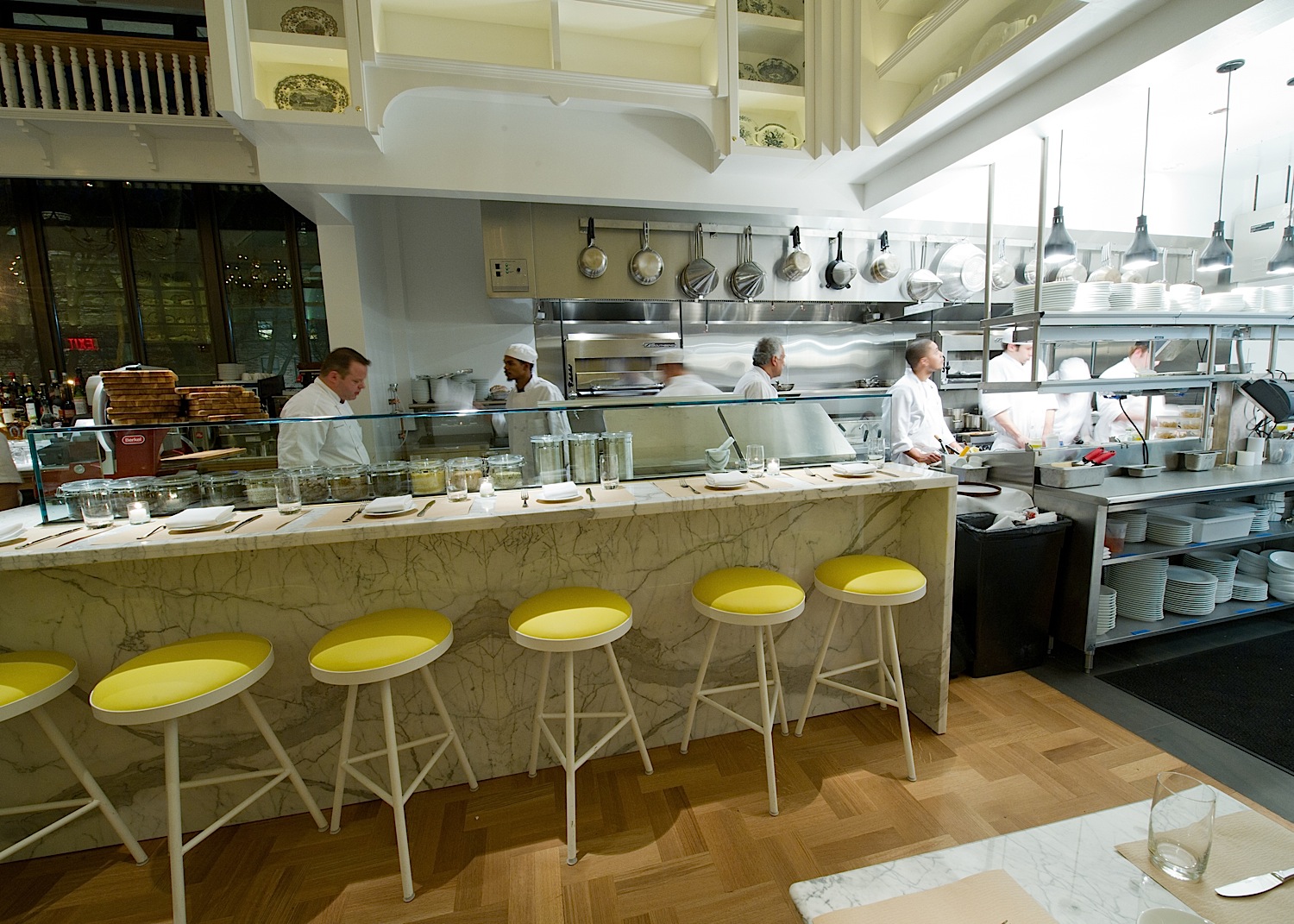 This being a
definitively American institution, the NYHS might
well have put in a definitively American restaurant,
and some critics have been puzzled by the
installation, instead, of a casual 74-seat Italian
trattoria, under
This being a
definitively American institution, the NYHS might
well have put in a definitively American restaurant,
and some critics have been puzzled by the
installation, instead, of a casual 74-seat Italian
trattoria, under I've had this
side of Florence. You can also order a wide selection
of salumi
cured meats and condiments. along with good crusty
bread.
I've had this
side of Florence. You can also order a wide selection
of salumi
cured meats and condiments. along with good crusty
bread.
And so to the pastas, and they are
mostly new to NYC Italian restaurants. There's a
lusty rigatoni with sausage ragù, dressed with
salty-sharp pecorino. House-made ridged garganelli (below) takes a
Southern slant, with cauliflower, pinenuts and
gratings of bottarga,
while ricotta cavatelli with abundant lobster meat and black trumpet
mushrooms comes at a very fair price, $22. Gnocchi gratinata with
black truffles lies under a cheese-rich fondue slipped
under the broiler to brown, a tasty dish but the gnocchi were too
softened beneath all the sauce and heat.
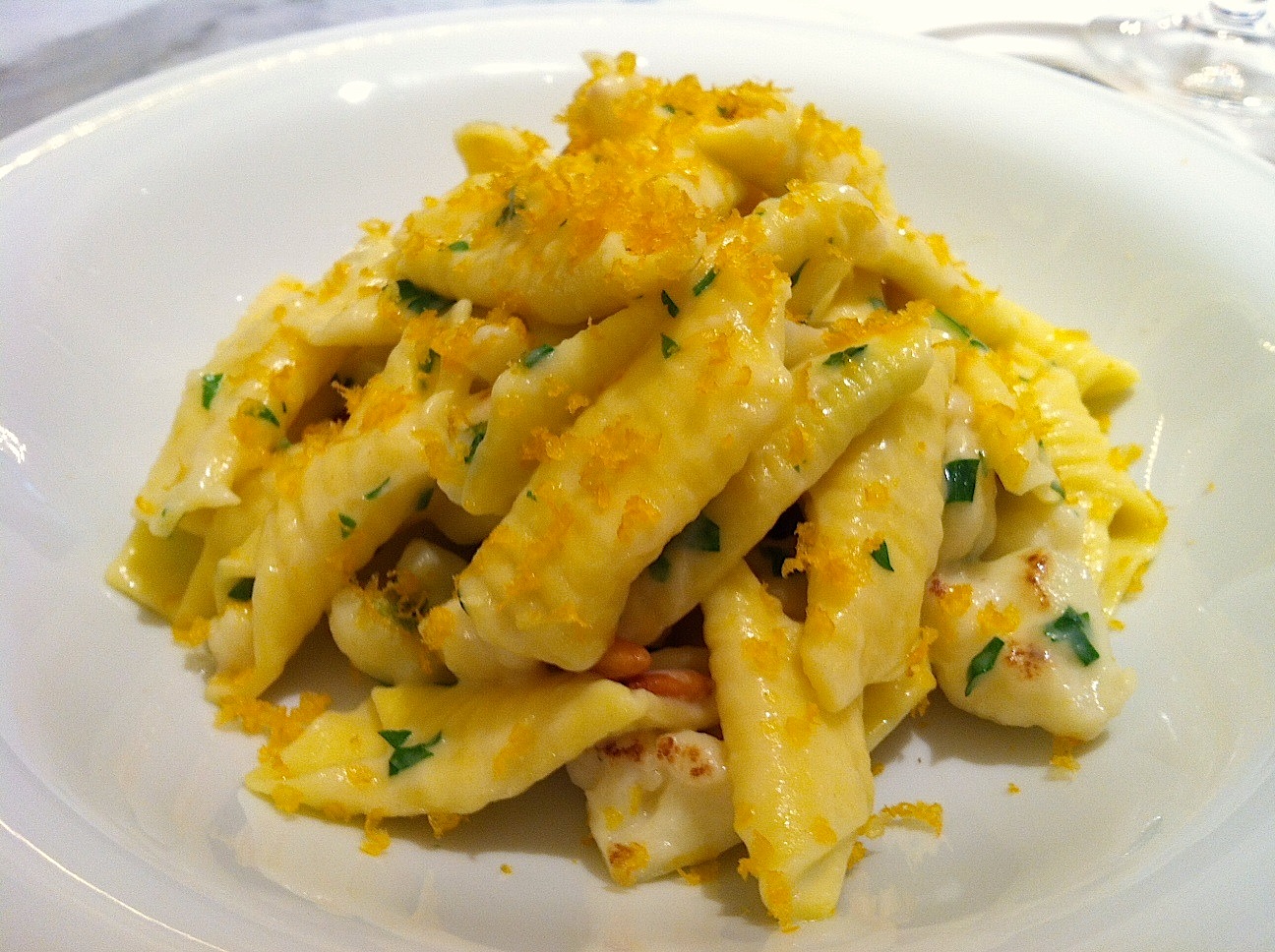 For secondi, there is
a fine roasted sea bass with cannellini beans and a
bright herb salad, and a first-rate veal shank osso
buco in a city of great osso bucos.
For secondi, there is
a fine roasted sea bass with cannellini beans and a
bright herb salad, and a first-rate veal shank osso
buco in a city of great osso bucos.
There is a certain lightness in
Burke's cooking here, so by all means have dessert,
maybe the delicate amaretto
semifreddo with an interesting sweet squash
caramel; a nice warm apple crostata with good pastry and a
scoop of vanilla
gelato; or a chocolate budino pudding
with "drunken" prunes and crème fraîche.
There are 50 well-priced Italian
wines on the list, about half available by the glass,
with plenty of bottles under $45.
I dined at Caffé Storico
twice--once on a cold winter's eve, once on a bright
winter's day. The lighting changes, of course, but not
the warmth of the ambiance or the consistency of the
food. Caffé Storico is a real charmer and
the kind of new restaurant that is making the Upper
West Side a seriou destination for serious diners.
Caffé Storico is open for lunch
Mon.-Sat., for dinner nightly, for brunch on Sunday.
At dinner starters run $5-$16, pastas (full
portions) $16-$22, main courses $24-$38.
❖❖❖
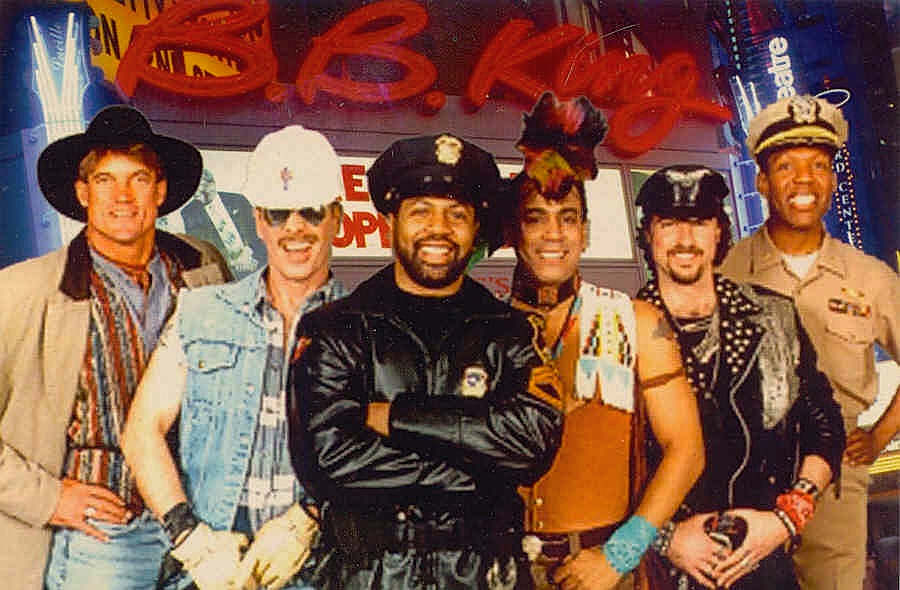 SOME LIKE THEM GRIZZLED
SOME LIKE THEM GRIZZLED
"Even a grizzled police
officer can find love on the streets of San Francisco,
with its countless cozy cafés and intimate
restaurants. If you are in the mood for amoré
this month, a stroll through the streets of the Lower
Haight, Presidio Heights, Duboce Triangle, or North
Beach is sure to reveal an enchanting spot that’s
perfect for a romantic interlude or a smoldering
encounter."=--James Stolich, "Cafe Society," Nob Hill Gazette
(Feb. 2012).

According to two London tabloids,
❖❖❖
Any of John Mariani's
books below may be ordered from amazon.com.
 |
My latest book, which just won the prize for best book from International Gourmand, written with Jim Heimann and Steven Heller, Menu Design in America, 1850-1985 (Taschen Books), has just appeared, with nearly 1,000 beautiful, historic, hilarious, sometimes shocking menus dating back to before the Civil War and going through the Gilded Age, the Jazz Age, the Depression, the nightclub era of the 1930s and 1940s, the Space Age era, and the age when menus were a form of advertising in innovative explosions of color and modern design. The book is a chronicle of changing tastes and mores and says as much about America as about its food and drink.
“Luxuriating vicariously in the pleasures of this book. . . you can’t help but become hungry. . .for the food of course, but also for something more: the bygone days of our country’s splendidly rich and complex past. Epicureans of both good food and artful design will do well to make it their coffee table’s main course.”—Chip Kidd, Wall Street Journal.
“[The menus] reflect the amazing craftsmanship that many restaurants applied to their bills of fare, and suggest that today’s restaurateurs could learn a lot from their predecessors.”—Rebecca Marx, The Village Voice. |
"Eating Italian will never be the same after reading John Mariani's entertaining and savory gastronomical history of the cuisine of Italy and how it won over appetites worldwide. . . . This book is such a tasteful narrative that it will literally make you hungry for Italian food and arouse your appetite for gastronomical history."--Don Oldenburg, USA Today. "Italian
restaurants--some good, some glitzy--far
outnumber their French rivals. Many of
these establishments are zestfully described
in How Italian Food Conquered the World, an
entertaining and fact-filled chronicle by
food-and-wine correspondent John F.
Mariani."--Aram Bakshian Jr., Wall Street
Journal.
"Equal parts
history, sociology, gastronomy, and just
plain fun, How Italian Food Conquered the
World tells the captivating and delicious
story of the (let's face it) everybody's
favorite cuisine with clarity, verve and
more than one surprise."--Colman Andrews,
editorial director of The Daily
Meal.com. "A fantastic and fascinating
read, covering everything from the influence
of Venice's spice trade to the impact of
Italian immigrants in America and the
evolution of alta cucina. This book will
serve as a terrific resource to anyone
interested in the real story of Italian
food."--Mary Ann Esposito, host of PBS-TV's
Ciao
Italia. "John Mariani has written the
definitive history of how Italians won their
way into our hearts, minds, and
stomachs. It's a story of pleasure over
pomp and taste over technique."--Danny Meyer,
owner of NYC restaurants Union Square Cafe,
Gotham Bar & Grill, The Modern, and
Maialino.
|
 |
 |
 |
 |
 |
 |
 |
 |
 Everett Potter's Travel Report:
Everett Potter's Travel Report: 
 Eating Las Vegas
is the new on-line site for Virtual Gourmet
contributor John A. Curtas., who since 1995
has been commenting on the Las Vegas food
scene and reviewing restaurants for Nevada
Public Radio. He is also the
restaurant critic for KLAS TV, Channel 8 in
Las Vegas, and his past reviews can be
accessed at KNPR.org.
Click on the logo below to go directly to
his site.
Eating Las Vegas
is the new on-line site for Virtual Gourmet
contributor John A. Curtas., who since 1995
has been commenting on the Las Vegas food
scene and reviewing restaurants for Nevada
Public Radio. He is also the
restaurant critic for KLAS TV, Channel 8 in
Las Vegas, and his past reviews can be
accessed at KNPR.org.
Click on the logo below to go directly to
his site.

Tennis Resorts Online: A Critical Guide to the World's Best Tennis Resorts and Tennis Camps, published by ROGER COX, who has spent more than two decades writing about tennis travel, including a 17-year stretch for Tennis magazine. He has also written for Arthur Frommer's Budget Travel, New York Magazine, Travel & Leisure, Esquire, Money, USTA Magazine, Men's Journal, and The Robb Report. He has authored two books-The World's Best Tennis Vacations (Stephen Greene Press/Viking Penguin, 1990) and The Best Places to Stay in the Rockies (Houghton Mifflin, 1992 & 1994), and the Melbourne (Australia) chapter to the Wall Street Journal Business Guide to Cities of the Pacific Rim (Fodor's Travel Guides, 1991).

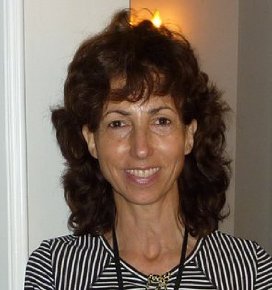
The Family Travel Forum - A
community for those who "Have Kids, Still Travel" and
want to make family vacations more fun, less work and
better value. FTF's travel and parenting features,
including reviews of tropical and ski resorts, reunion
destinations, attractions, holiday weekends, family
festivals, cruises, and all kinds of vacation ideas
should be the first port of call for family vacation
planners. http://www.familytravelforum.com/index.html
ALL YOU NEED BEFORE YOU GO


MARIANI'S VIRTUAL GOURMET
NEWSLETTER is published weekly. Editor/Publisher: John
Mariani.
Contributing Writers: Christopher Mariani, Robert Mariani,
John A. Curtas, Edward Brivio, Mort Hochstein,
Suzanne Wright, and Brian Freedman. Contributing
Photographers: Galina Stepanoff-Dargery,
Bobby Pirillo. Technical Advisor: Gerry McLoughlin.
© copyright John Mariani 2012
